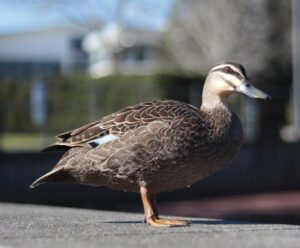
As our climate changes, concerns go not only to how humans will adapt but how Earth’s many creatures will equally adapt to the world around them. Their processes differ from ours in that they have no resources to help them acclimate. Instead, they move from location to location to keep as close to the temperature spreads that they’re comfortable with. If that all changes to models of climate that are not acceptable to birds, then what do they do; where do they go; and how do they adjust or adapt? All these questions are in active research as scientists and bird experts dig deep to discover how birds are handling the changes.
The Royal Society, in its Biology Letters section, has published a study by four researchers that looks at how birds effectively regulate heat loss. Birds’ feathers help them keep them warm. But to shed heat, it was known that they use their beaks. The beaks have no feathers but have veins within. This gives the birds optimal ability to reduce the heat that their feathered bodies cannot by regulating blood flows. Now, we also understand that the birds use their legs to do the same, but to a much greater extent than previously thought. In essence, birds can increase and restrict blood flow to their legs. They increase blood flow to dissipate heat in hot conditions; and restrict blood flow to conserve heat in cold conditions.
Thermal Imaging Unlocks Birds’ Heat Regulation Tricks
The study was undertaken from 2020 through 2023. Fourteen Australian bird species were closely studied with the use of high-resolution thermal camera imaging. Great care was taken to eliminate all manner of interference – accumulated data that were outside the range of the bird interactivity – to produce as precise an informative dataset for evaluation. Such things include if the bird was wet, wind speeds, and surrounding air temperatures impacted by solar heating. The goal was to isolate heat transfer and watch how the bird regulated heat for its own good and on its own initiative.
The collection of many thermal images provided a strong, clear look at how the bird was regulating temperatures. It was discovered that the birds have an active temperature control within the climate they are currently in. It was noted that the larger the bill and/or the legs, the greater the heat exchange. When the days got hotter, birds used their bill and their legs for adjustments. When the days were colder, the beaks shed the heat accumulated while the legs restricted heat loss to help maintain desirably warmer body temperatures.
The bird’s legs act as an effective “thermometer” that allows the bird to continually adjust its body’s temperature in as suitable a way as possible. It is theorized that if the temperatures in the changing climates continually get hotter, birds might evolve longer legs to help even further with their temperature control.
As always, the data is far more detailed than I have written for an article like this. You can get a greater understanding by visiting the actual study writings here.
